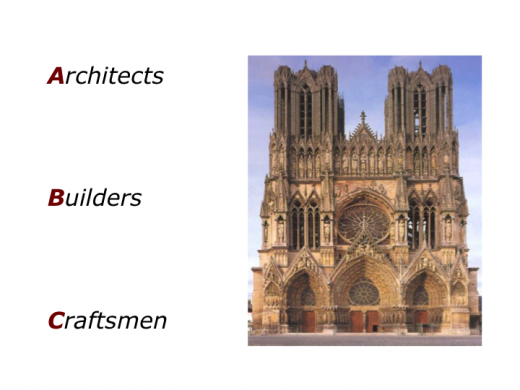
Imagine you are due to make a presentation to a leadership team. The group will be made up of people who process information in different ways. There will be ‘architects’, ‘builders’ and ‘craftsmen’.
Let’s consider these three types and how you can communicate with each of these successfully.
Architects
Architects are often decision makers and see the big picture. They like headlines.
They immediately want to know the relevance of the presentation and, where appropriate, the improved results it will help them or their organisation to achieve.
Such people often leap to the destination quickly. They go ‘A, B … and leap to … Z’.
Visionary by nature, they tend not to get into details. But they may also ask the odd curve ball question to check if you have done your homework.
Architects sometimes have a short attention span. So double-check they are still interested, otherwise they may get bored and cause difficulties. Once onside, however, you will find they are great advocates.
If you wish, try tackling the exercise on this theme. This invites you to describe the specific things you can do to communicate with such architects.
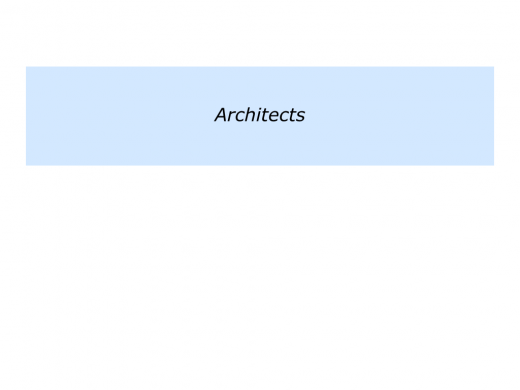
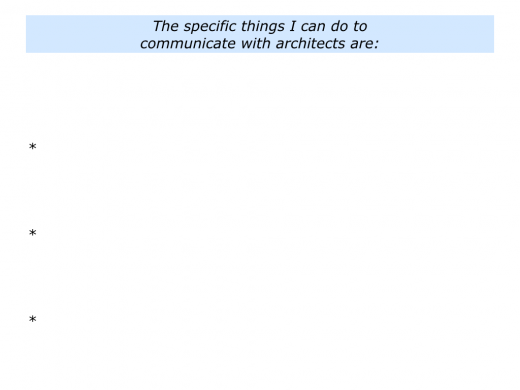
Builders
Builders pursue a more ‘logical’ thought process. They go: ‘A, B, C … until they get to Z’.
Such people may be project managers, for example, who concentrate on implementation plans. They focus on the processes to be followed to get the job done. So have your facts ready to answer their questions.
Try to meet with the key architects and builders before the presentation. Agree on the principles for achieving the goals.
You need the builders onside to ensure the project or other piece of work gets finished. They will be the people who make sure things happen.
If you wish, try tackling the exercise on this theme. This invites you to describe the specific things you can do to communicate with such builders.
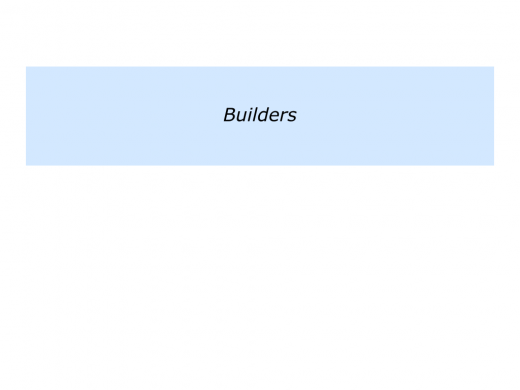
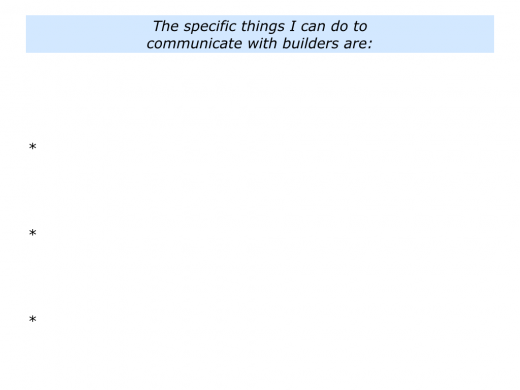
Craftsmen
Craftsmen are specialists who are often knowledge workers. Knowing every detail in their field, they are likely to discuss the intricacies of engraving each brick.
Sometime they can throw presentations off-track by interrupting in mid-sentence, saying:
“Do you realise the problems involved in point ‘C’?”
Craftsmen care deeply about their work, so you need them onside.
One approach is to produce a detailed compendium that provides answers to their key questions. You can refer to how their concerns are covered in this back-up material, then continue with the flow of your presentation.
If you wish, try tackling the exercise on this theme. This invites you to describe the specific things you can do to communicate with craftsmen.

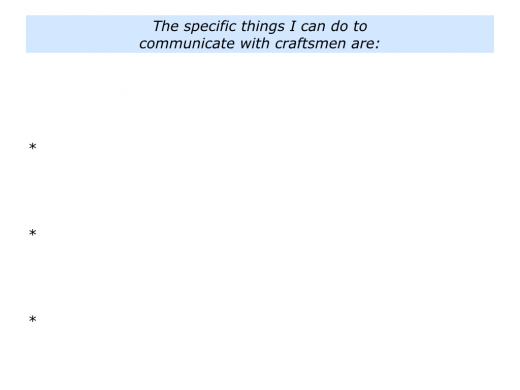
Presentations obviously work best when you prepare properly, so try to lay the groundwork.
Before the session, start by getting the architects onside and, if possible, get one-to-one meetings with the builders and craftsmen.
During these meetings you will, of course, need to present the information in different ways for people with different learning styles. This will provide you with the greatest chance of success.
If you wish, try tackling the final exercise on this theme. This invites you to do the following things.
Describe a specific presentation that you may make in the future to a group consisting of people who think in these different ways.
Describe the specific things you can do to do your best to communicate with people who are architects, builders and craftsmen.
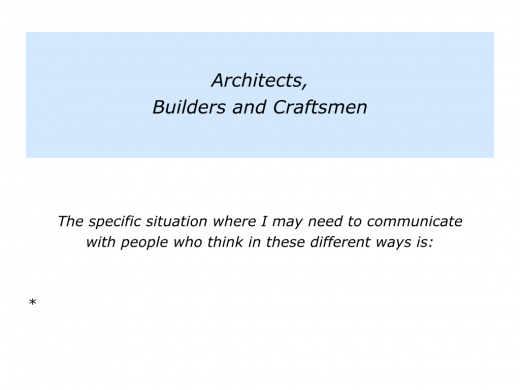
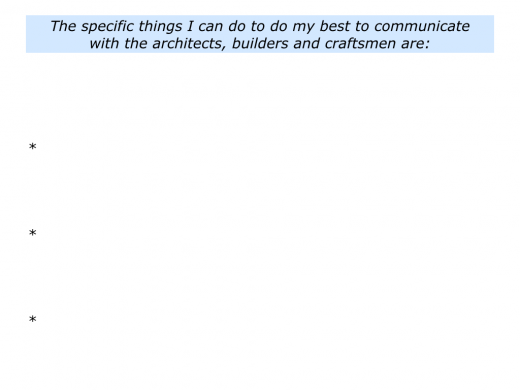






Leave a Reply